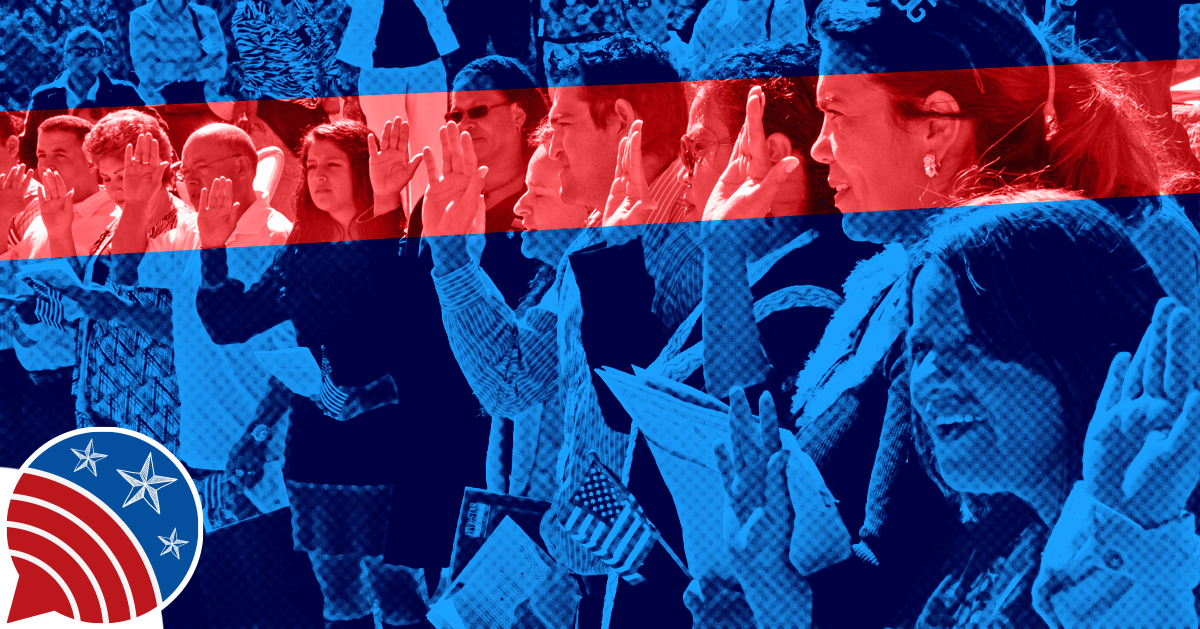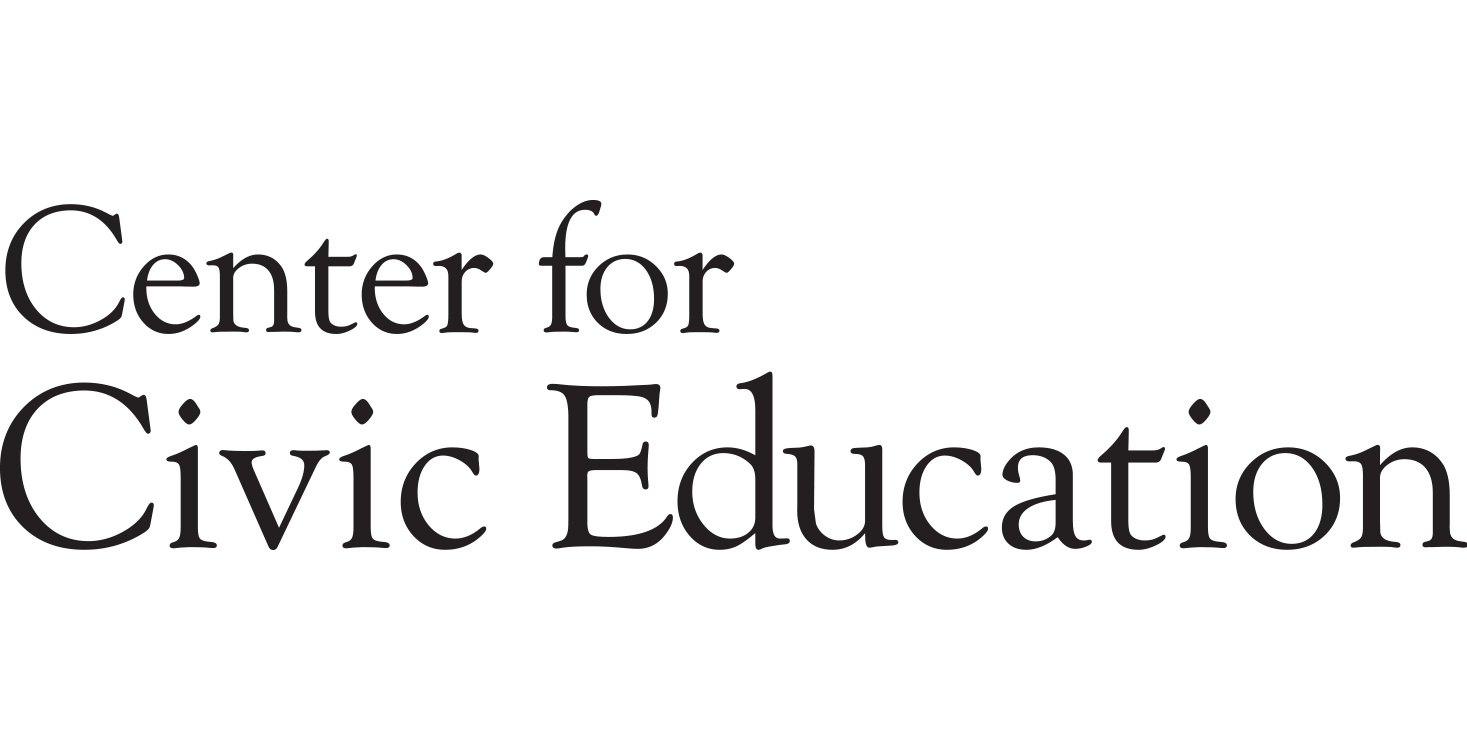
Citizenship
Session Plan
- Begin by asking participants if they are familiar with the concept of citizenship.
- Ask participants to work with a partner to list examples of membership and what it means to be a member of something.
- Ideas might include common requirements, obligations, privileges, and opportunities.
- List these on board or chart paper.
- Instruct them to consider examples of membership on different scales (local, state, federal, private organizations, community, etc.)
- Ask how membership is similar to citizenship.
- Have a brief discussion to explore their understanding and examples of citizenship in contemporary society.
- Based on their examples, ask participants if a non-citizen can exemplify citizenship in America.
- Introduce the Chinese Exclusion Act using, if needed, the brief explanation below:
The Chinese Exclusion Act was a significant piece of U.S. legislation passed in 1882, marking the first time a specific ethnic or national group was explicitly prohibited from immigrating to the United States. The law was aimed at Chinese laborers arriving in large numbers, particularly during and after the California Gold Rush and the construction of the Transcontinental Railroad. The act effectively halted Chinese immigration for ten years and declared Chinese immigrants ineligible for naturalization as U.S. citizens.
This law came about in response to economic fears and racial prejudices prevalent during the period. Many Americans on the West Coast felt that Chinese immigrants were taking jobs away from them by accepting lower wages, contributing to economic instability and tension. Moreover, there was a widespread racial bias, with stereotypes and misinformation about Chinese culture and people adding to the animosity and leading to discriminatory practices and policies.
The Chinese Exclusion Act was initially slated to last for a decade, but it was subsequently renewed and made more restrictive with the Geary Act in 1892, and it was later made permanent. These laws made it incredibly challenging for Chinese immigrants already in the U.S. to bring over family members and nearly impossible for new immigrants to arrive. The laws also significantly increased anti-Chinese sentiment and set a precedent for further restrictive and discriminatory immigration policies.
The Act was finally repealed in 1943 with the Magnuson Act when China became an important ally to the U.S. during World War II. However, the full and more equal loosening of immigration restrictions didn't occur until the Immigration and Nationality Act of 1965. The legacy of the Chinese Exclusion Act serves as a reminder of a regrettable period of legally sanctioned racial discrimination in the U.S. It continues to influence conversations about immigration and race relations today.
- Chart Paper (1 sheet/group)
- Markers
- Sticky Notes
Tell participants: Today, we will focus on some big issues and ideas around citizenship and immigration being grappled with during the 19th century in the United States of America.
Option 1: Whole Class Exploration
- Share the first podcast episode, Citizenship at the Founding, with your students.
- While they view/listen to the recording, ask students to pay attention to the nuances of citizenship within the United States at its founding.
- After watching/listening to the podcast, ask one student to share a summary of the ideas and topics discussed. Prompt other additional students to correct or expand upon the shared summary.
- Repeat this process for the remaining four podcasts, adding questions and wonderings to fuel reflection and inquiry based on each of the 60-second podcasts.
Option 2: Small Group Activity
- Divide the class into small groups (4-5 students each). Before the activity, set up stations, with each station set up with one of the four remaining podcasts. Assign each group to a specific station.
- Podcast episodes can be cued up with a link or QR code on the paper. Students can use phones or devices, or tablets can be set at each station.
- Tell each group they will have five minutes at each station until they are prompted to rotate.
- When they arrive, they will have one minute to actively listen to the podcast (taking notes on key points, interesting facts, or any thoughts that arise). At the end of the podcast, students will have four minutes to write down their reaction questions and thoughts on that station’s chart paper.
- After five minutes, students will be prompted to rotate counterclockwise to the next station.
- Repeat steps 3 and 4 until each of the groups has visited each of the stations.
- Each group will have five minutes to review the reflection notes on the chart paper at their final station.
- Prompt groups to identify trends or common reactions on their chart paper.
- Ask each group to share their findings at the end of the five minutes.
Extension Opportunity: The U.S. Constitution
- Provide participants with the text of the Constitution and its various amendments (found in American Legacy and online).
- Challenge students to find relevant references to citizenship through the main articles and the amendments.
- What does the Constitution do to establish citizenship?
- Where does it fall short?
- What questions remain?
Extension Opportunity: Beyond the Legacy Video Guide
- After discussing the 60-Second Civics podcasts, share the Beyond the Legacy Video: Citizenship in America. Use any or all of the questions noted below and additional questions in the resource Beyond the Legacy Video Guide: Citizenship.
- How was our concept of citizenship shaped by our early colonial/state experiences?
- How did the experience of state citizenship transform into national citizenship?
- Why was the Civil War considered a turning point for citizenship?
- How did different groups face different issues regarding citizenship during this time?
- Describe the role of inclusion and exclusion during this period.
- How do the 13th, 14th, and 15th Amendments shape citizenship?
- What is the significance of Minor v. Happersett, the Chinese Exclusion Act, and Emma Lazarus’ “The New Colossus?”
- How has the inclusion and exclusion dichotomy continued?
- How is naturalized versus birthright citizenship different and the same?
- Describe some persistent issues with citizenship in America, such as how to treat people on the path to citizenship, Dreamers’ rights, and non-citizens’ voting rights.
Now that participants have been exposed to the Chinese Exclusion Act, transition to a review of that text to deepen their understanding of citizenship. Make real-world connections between the era of the texts’ and the role of immigration and citizenship in the present-day United States.
- The Chinese Exclusion Act
- “The New Colossus,” by Emma Lazarus
- The U.S. Constitution
- Amendments to the Constitution
- Citizenship in America 60-Second Civics Podcast
- Beyond the Legacy Video: Citizenship in America
- Beyond the Legacy Video Guide: Citizenship
- Chart Paper
- Markers
- Sticky Notes
- Interactive Whiteboard
- Digital Collaboration Space
Discourse Launch Activity
Note: The following steps are the beginning of the Paideia seminar process, which entails taking a deep dive into the text. Whether doing the Paideia or the Structured Academic Controversy (SAC) as the discourse model (or both), these steps provide the opportunity to access the text for use in either discourse activity.
- Distribute the text of the Chinese Exclusion Act and allow participants 2-3 minutes to read it. Provide the background information from the session plan’s earlier Engage section.
- Ask participants to respond to the following questions:
- What do you think was the intended impact of the Chinese Exclusion Act on Americans?
- What about its impact on Chinese immigrants interested in coming to America?
- What about its impact on Chinese immigrants in the US at the time of the act’s passage?
- Discuss responses to the Launch activity questions with session participants.
Introduce “The New Colossus,” by Emma Lazarus. - Text Support Option: Teachers can use the Close Reading Template to add the text, providing a strong framework for analyzing and understanding complex text. In using this template, teachers will need to develop text-dependent questions to support students’ comprehension. This is a powerful tool to support literacy in all learners in addition to scaffolding in preparation for the civil discourse.
Primary Text Inspectional Read
- Distribute the text of “The New Colossus” and ask participants to anticipate what they expect this reading to be like.
- Have participants number the lines 1-14. Read the poem aloud for the first time. Have participants underline any words with which they are unfamiliar.
Vocabulary
- Have participants share the words and phrases they found unfamiliar while a volunteer lists them on the (interactive) whiteboard. Be sure to include:
- Use your preferred practices for front-loading vocabulary comprehension in a complex text.
- Alternatively, assign the words and phrases to groups of participants to research and define.
- Have the groups share with the entire class and discuss until all participants are comfortable with the surface meaning of the text.
Analytical Read
- Have participants reread the text selection, slowly highlighting the three most impactful lines or sentences.
- Then, in the margins of the selections, ask students to write notes on what makes those lines or sentences so compelling.
- Chart Paper (1 sheet/group)
- Timer (optional)
- Sticky Notes
- Markers
Note: Choose one or both of the discourse models below.
Civil Discourse Model #1
- Paideia Seminar: A Paideia Seminar is a collaborative, thought-provoking dialogue about a text selection, facilitated with open-ended questions. The seminar's main purpose is to arrive at a fuller understanding of the textual ideas, values, and of ourselves and each other. The discussion over days 2-3 will be on the Chinese Exclusion Act, “The New Colossus,” and the United States government’s views on immigration at that time. Participants will make active connections between the ideas present in the document and the impact of these ideas on our lives today.
Civil Discourse Model #2
- Structured Academic Controversy (SAC): In the structured academic controversy, participants are assigned a stance on a question and work to reach a consensus on a contentious issue. The strategy reinforces the idea that before people commit to a side, they should seek to understand the argument of the other side. The goal of a SAC is not to win; instead, SACs should give participants adequate time to present content knowledge and diverse perspectives as well as time for clarification questions, small group discussion, large group discussion, and consensus building. The predetermined format allows for structure and support for multiple viewpoints to be heard, understood, and validated while informing everyone’s views on whether the Constitution supports a clear definition of citizenship.
- Paideia Seminar Plan – The Chinese Exclusion Act
- Option: Use the Paideia Plan template and engage with a different text such as the United States Constitution, Minor v. Happersett, or combine these with the original documents.
- Highlight some ideas discussed during the previous day’s discourse model(s). Be specific and explicitly connect comments and ideas to the participants who shared them.
- Return to the Inquiry question:
- What does it mean to be an American citizen?
- As a pre-writing exercise, participants should be encouraged to revisit notes they captured on the margins of their text selection, personal recording space, etc., and during the Launch Activity to refresh their memories of earlier discussions on this topic.
- Select one or both activities below to assess and authentically engage participants as you conclude this discourse.
Writing Task
- What symbol, media selection, or image best represents your school or institution of higher learning’s relationship with citizenship since its conception? Write an opinion essay to the entity's leadership explaining and defending your choice. Consider all the texts discussed to date, issues raised in related readings, and your background knowledge of your institution.
Or - While the Supreme Court has weighed in on the definition of a citizen, Congress has also passed numerous laws throughout its history that have attempted to restrict or expand the definition of a citizen. Examine different acts of Congress (additional sources below) and compare them with the Supreme Court decisions examined in the SAC. Write an argumentative essay (or other form of expressive work like a PowerPoint presentation or a Public Service Announcement video) that states whether you believe Congress or the Supreme Court has played a bigger role in defining citizens and citizenship. Include the key reasons why you have taken that stance, and discuss how the definition of a citizen impacts American democracy. Focus on the included texts and podcasts, issues raised in related readings and during the SAC, and your background knowledge for your stance.
Extension Task
- Which ideas from the seminar and/or SAC still interest and intrigue you? Using notes from the dialogues, research the issue further. Share new resources with classmates. Suggest new questions to consider for future dialogues.
Or - Immigration reform has been a contentious topic in the United States in recent decades. Outline a policy for immigration reform that you believe addresses the concerns of multiple major political parties. Identify the key stakeholders of your policy and address what role they would play in supporting and implementing your policy.







